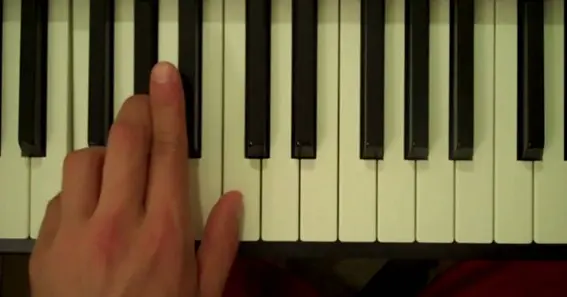The F minor (Fm) piano chord is a fundamental component in music, characterized by its melancholic and deep sound. Understanding its structure, inversions, and applications can enhance your piano playing skills and musical expression.
Structure of the Fm Piano Chord
The F minor chord is a triad consisting of three notes:
- Root: F
- Minor Third: A-flat (Ab)
- Perfect Fifth: C
This combination creates a chord with a somber and introspective quality.
How to Play the Fm Chord on Piano
To play the F minor chord in its root position:
- Right Hand:
- Thumb (1) on F
- Middle Finger (3) on Ab
- Little Finger (5) on C
- Left Hand:
- Little Finger (5) on F
- Middle Finger (3) on Ab
- Thumb (1) on C
This finger positioning ensures comfortable playability and smooth transitions between chords.
Inversions of the Fm Chord
Chord inversions rearrange the order of notes, providing different voicings and smoother transitions:
-
First Inversion:
- Notes: Ab (root), C (third), F (fifth)
- Right Hand Fingering:
- Thumb (1) on Ab
- Index Finger (2) on C
- Little Finger (5) on F
- Left Hand Fingering:
- Little Finger (5) on Ab
- Middle Finger (3) on C
- Thumb (1) on F
-
Second Inversion:
- Notes: C (root), F (third), Ab (fifth)
- Right Hand Fingering:
- Thumb (1) on C
- Middle Finger (3) on F
- Little Finger (5) on Ab
- Left Hand Fingering:
- Little Finger (5) on C
- Index Finger (2) on F
- Thumb (1) on Ab
Mastering these inversions allows for greater flexibility in chord progressions and accompaniment patterns.
Applications of the Fm Chord
The F minor chord is prevalent in various musical contexts:
- Chord Progressions: Common progressions in the key of F minor include:
- i – VI – VII (Fm – Db – Eb)
- i – iv – v (Fm – Bbm – Cm)
- Genres: The Fm chord is utilized across genres such as classical, jazz, blues, and contemporary music, often to convey emotions ranging from melancholy to introspection.
Conclusion
Understanding and mastering the F minor chord enhances your musical versatility, enabling you to express a wide range of emotions and styles. Incorporating its various inversions and recognizing its role in different progressions will enrich your piano playing experience.
FAQs
-
What notes make up the F minor chord?
The F minor chord consists of the notes F, A-flat (Ab), and C.
-
How do you play the Fm chord on the piano?
Place your right-hand thumb on F, middle finger on Ab, and little finger on C. For the left hand, use the little finger on F, middle finger on Ab, and thumb on C.
-
What are the inversions of the F minor chord?
The F minor chord has two inversions:
- First Inversion: Ab (root), C (third), F (fifth)
- Second Inversion: C (root), F (third), Ab (fifth)
-
In which musical genres is the Fm chord commonly used?
The Fm chord is commonly used in classical, jazz, blues, and contemporary music genres.
-
What emotions does the F minor chord typically convey?
The F minor chord typically conveys a melancholic or somber emotion.










